The Philippine Statistics Authority (PSA) has conducted the
2024 Functional Literacy, Education, and Mass Media Survey (FLEMMS) last October 2024. It aims to gather data as basis in determining the state of literacy in the country, shaping inclusive and targeted education and training policies, to assess information dissemination strategies and identify gaps in media access, especially in rural and underserves platforms.
The 2024 FLEMMS adopts a revised operational definition and methodology for measuring basic and functional literacy as approved by the PSA Board through Resolution No. 13, Series of 2024.
Basic literacy is defined as the ability of a person to read and write a simple message in any language or dialect with understanding, and to compute or perform basic mathematical operations.
Functional literacy is the ability of a person to read, write, compute and comprehend. In addition to the basic literacy skills, functional literacy includes higher level of comprehension skills, such as integrating two or more pieces of information and making inferences based on the given information.
1. Basic Literacy Rate in Bacolod City is the highest in Negros Island Region
The 2024 FLEMMS result revealed that 87.0 percent or 9 out of
10 Filipinos in Negros Island Region aged 5 years and over had basic literacy. This translates to approximately 3.7 million or
3,767,000 individuals aged 5 years and over who can read, write, and compute from an estimated total of 4.3 million or 4,330,000 individuals in the same age group.
Basic literacy rates varied across the region and among all provinces, including the Highly Urbanized City. Bacolod City had the highest basic literacy rate at 93.8 percent, while the Province of Negros Occidental recorded the lowest at 83.4 percent (Please see Figure 1).
Figure 1. Basic Literacy Rate of Population 5 Years Old and Over by Province, Negros Island Region 2024 (in percent)
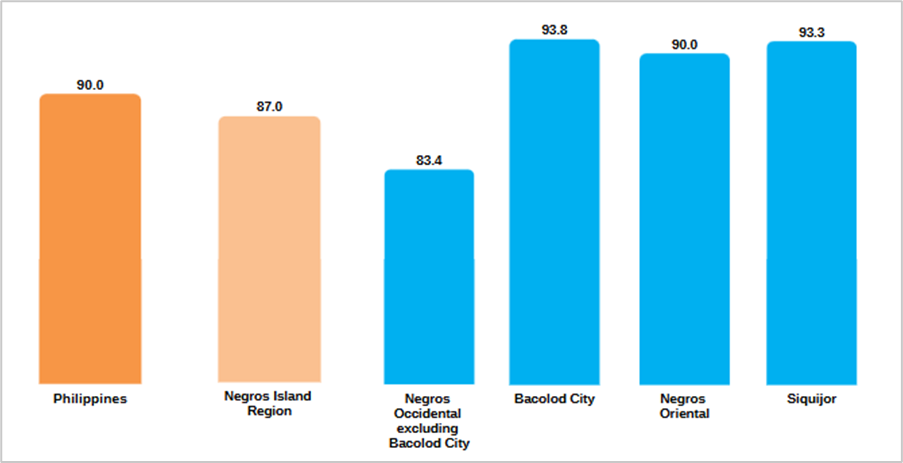
Source: Philippine Statistics Authority, 2024 Functional, Literacy, Education and Mass Media Survey
In terms of sex, basic literacy rate was higher for females at 88.5 percent compared to males at 85.5 percent. By age group, individuals who are 15 to 19 years old had the highest basic literacy rate at 95.9 percent. On the other hand, 60 years old and over reported the lowest at 68.0 percent (Please see Figure 2).
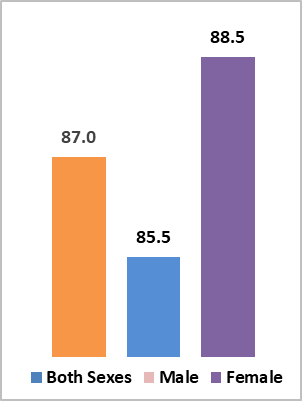
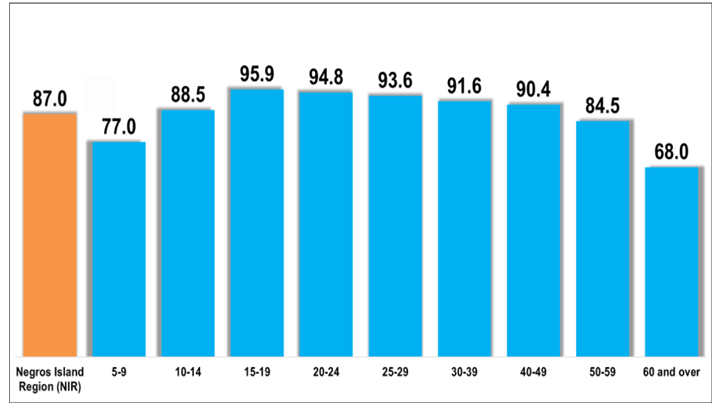
Source: Philippine Statistics Authority, 2024 Functional, Literacy, Education and Mass Media Survey
2. Functional literacy rate in Negros Island Region is highest in Siquijor
The functional literacy rate in 2024 in Negros Island Region was recorded at 65.7 percent, or about 7 out of 10 individuals aged 10 to 64 years old were functionally literate. This translates to around 2,313,000 individuals aged 10 to 64 years old who can read, write, compute, and comprehend from an estimated total of 3,519,000 individuals in the same age group.
Siquijor recorded the highest functional literacy rate at 80.0 percent, while Negros Occidental had the lowest at 59.4 percent (Please see Figure 3).
Figure 3. Functional Literacy Rate of Population 10 to 64 Years Old by Province, Negros Island Region: 2024 (in percent)

Source: Philippine Statistics Authority, 2024 Functional, Literacy, Education and Mass Media Survey
By sex, females showed a higher functional literacy rate at 70.1 percent compared to males at 61.6 percent. Among age groups, individuals aged 20 to 24 years recorded the highest functional literacy rate at 75.0 percent, while those aged 60 to 64 years had the lowest rate at 50.0 percent (Please see Figure 4).
Figure 4. Functional Literacy Rate of Population 10 to 64 Years Old by Age Group, Negros Island Region: 2024 (in percent)
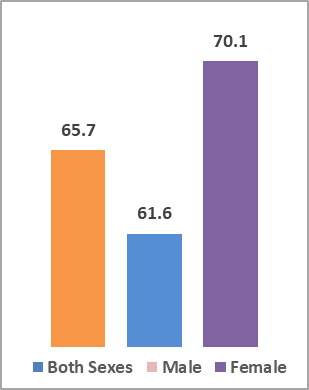
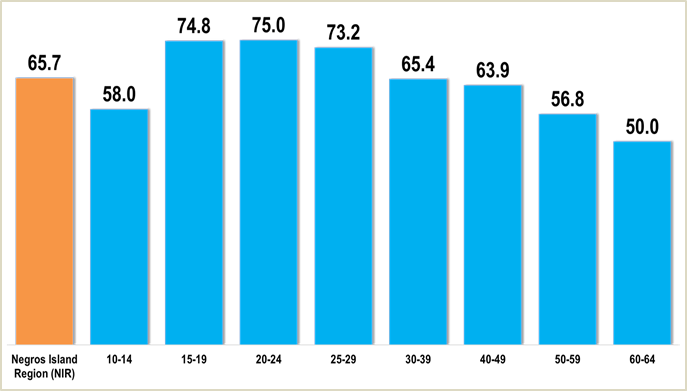
Source: Philippine Statistics Authority, 2024 Functional, Literacy, Education and Mass Media Survey
For further information, please contact the Statistical Operations and Coordination Division at telephone number (034) 435-5385 and email address rssonir@psa.gov.ph.

